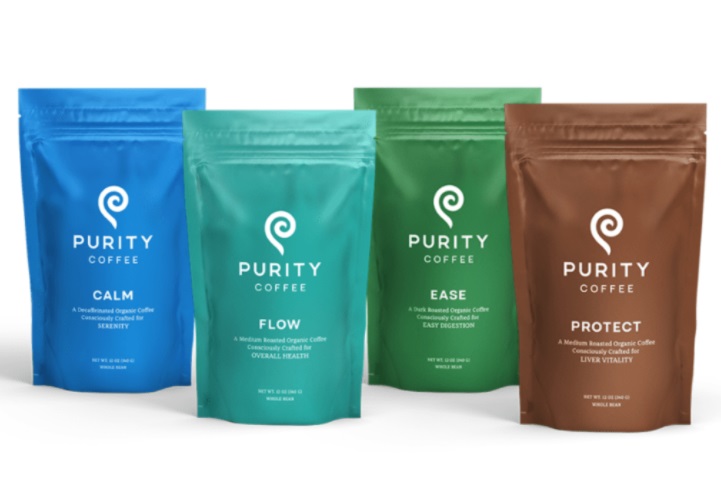
Histamine is a compound involved in our immune responses, playing a key role in allergic reactions and regulating physiological function in the gut. However, for some people, histamine can be a bit of a troublemaker, especially when it accumulates excessively, leading to symptoms like headaches, digestive issues, and skin irritations.
This is where low histamine coffee comes into the picture. For coffee enthusiasts with histamine intolerance, finding a brew that won’t exacerbate their symptoms is crucial. Low histamine coffee brands aim to provide a morning cuppa that’s gentle on the system, allowing everyone to enjoy the ritual of coffee drinking without the unwanted side effects.
Key Takeaways
- Coffee and Histamine: While coffee isn’t a histamine bomb, it can influence how histamine behaves in your body, primarily due to its caffeine content. This can be particularly relevant for individuals sensitive to histamine.
- Mold and Processing: Not all coffee is created equal. The presence of mold or suboptimal processing techniques can hike up the histamine levels in your cup. That’s something to watch out for if you’re histamine-sensitive.
- Seeking Alternatives: Thankfully, there are coffee brands out there that cater to the low histamine crowd, offering beans that are carefully processed to keep histamine levels at bay.
- Brewing Matters: How you brew your coffee can also impact its histamine content. Exploring different brewing methods could be key to enjoying your brew without discomfort.
- Beyond Coffee: If coffee still doesn’t sit well with you, there’s a world of alternatives out there. From herbal teas to grain-based coffee substitutes, you don’t have to give up on a warm, comforting beverage to start your day.
Understanding Histamine Intolerance and Coffee
Histamine intolerance might sound niche, but it’s a real concern for some folks. Imagine your body reacting to certain foods like they’re unwelcome guests, causing a range of symptoms that can be quite bothersome. That’s histamine intolerance in a nutshell. It’s not that your body hates histamine – it’s more like it just can’t handle too much of it. This imbalance can lead to a variety of symptoms, including skin rashes, headaches, digestive issues, and more.
Now, let’s talk coffee – the morning ritual for many. For most people, coffee is a beloved wake-up call, but for those with histamine intolerance, it’s a bit more complicated. Coffee itself isn’t a major histamine source, but it can influence histamine metabolism, primarily due to caffeine. Caffeine might mess with the enzymes that break down histamine, potentially exacerbating symptoms for some.
But here’s a silver lining – not all coffee is the same. Low histamine coffee brands take extra care to minimize these effects, providing a more comfortable option for those with intolerance. They focus on reducing factors like mold, which can contribute to histamine content, ensuring you can still enjoy a warm cup without the worry.
Identifying Low Histamine Coffee Brands
For those navigating the tricky waters of histamine intolerance, the coffee aisle can be a bit overwhelming. But fear not, there are coffee brands out there that get it and have tailored their products to be more histamine-friendly. These brands usually adopt meticulous processing methods to ensure that their coffee beans are low in histamine.
One common approach is careful selection and handling of beans to prevent mold – a major histamine trigger. These brands often choose high-quality, organic beans, as organic farming methods reduce the risk of mold and chemical contaminants. Additionally, some brands use specific roasting techniques designed to minimize potential histamine-producing compounds.
While the names of specific brands were not included here, when shopping, look for those that highlight their mold-free processing or emphasize organic, high-quality sourcing. Reading labels and looking for certifications can guide you toward a better brew for your histamine needs.
The Impact of Brewing Methods
The way you brew your coffee can also play a significant role in its histamine content. Who knew, right? Different brewing methods can influence the final histamine levels in your cup. For instance, methods that involve longer brewing times or higher temperatures might increase histamine levels.
Cold brew is often considered a safer bet for those with histamine intolerance. This method involves steeping coffee grounds in cold water over a long period, which tends to extract less histamine-inducing compounds compared to hot brewing methods.
On the other hand, espresso or Turkish coffee, with their intense extraction processes, might not be the best choice for those watching their histamine intake. If you’re a fan of these styles, consider experimenting with brewing times and temperatures to see what works best for you.
Coffee Additives and Histamine Levels
When it comes to your cup of joe, it’s not just the coffee itself you need to consider; the extras you add can also play a big role in how histamine-friendly your beverage is. For instance, dairy is a known histamine trigger for many, so that splash of milk or cream could be contributing to histamine levels in your coffee. Plant-based milk alternatives might be a safer bet, but be sure to check for additives that could hike up histamine.
Sweeteners are another additive to watch. Natural sweeteners like honey or agave can contain higher levels of histamine, so opting for a low-histamine sweetener or simply enjoying your coffee unsweetened could be a better choice for keeping histamine levels in check.
Alternatives to Coffee for Histamine Intolerance
If coffee is off the table, don’t fret; there are plenty of other warm, comforting beverages to start your day. Herbal teas are a great option, with varieties like peppermint, rooibos, and ginger offering flavorful alternatives without the histamine spike. Just ensure they’re pure and free from high-histamine herbs or additives.
For something closer to coffee, consider grain-based substitutes like chicory root coffee, which mimics coffee’s richness without the caffeine or histamine. These alternatives can be brewed just like coffee and offer a comforting ritual to start your day.
Another innovative option is golden milk, a turmeric-based concoction known for its anti-inflammatory properties. Not only is it warm and soothing, but it’s also packed with health benefits, making it a great start to the day.
If you miss the caffeine kick, green tea can be a gentler alternative, though it’s essential to note that some people with histamine intolerance might still react to it, so it’s all about finding what works for your body.
FAQs
Can I drink coffee if I have histamine intolerance?
Yes, you can, but it’s wise to choose low histamine coffee brands that minimize triggers and monitor how your body responds to it.
What makes a coffee low in histamine?
Low histamine coffees are often carefully sourced and processed to avoid contamination with mold and other histamine-increasing substances. They might also use specific roasting techniques to keep histamine levels low.
How do additives affect histamine levels in coffee?
Additives like dairy or certain sweeteners can increase histamine levels. Opting for plant-based milk or low-histamine sweeteners can help keep your coffee more histamine-friendly.
Are there any coffee alternatives recommended for histamine intolerance?
Yes, herbal teas, grain-based coffee substitutes, and turmeric-based drinks like golden milk are great alternatives that typically have lower histamine levels.
Can brewing methods impact the histamine content in coffee?
Absolutely. Brewing methods that involve lower temperatures or shorter brewing times, like cold brewing, are generally better for keeping histamine levels low in coffee.
Final Thoughts
Navigating the world of coffee with histamine intolerance might seem daunting, but armed with the right knowledge, it’s entirely manageable. Opting for low histamine coffee brands, being mindful of additives, and choosing suitable brewing methods can significantly impact your enjoyment of coffee without the unwanted side effects.
Remember, everyone’s tolerance levels can vary, so it’s important to listen to your body and adjust your coffee consumption accordingly. Embracing alternatives can also broaden your morning ritual horizons, ensuring you start your day right, without compromising on taste or your well-being.









